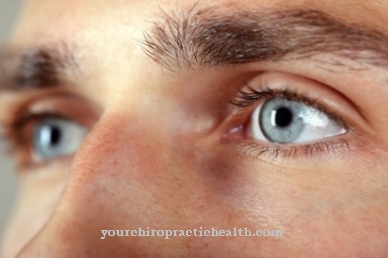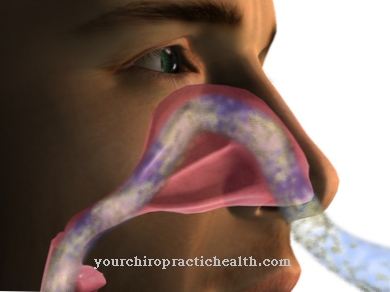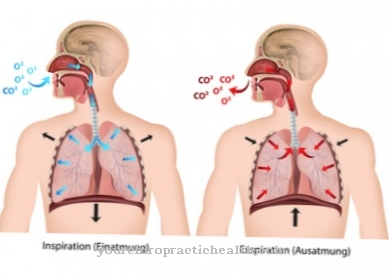How will the Cell development Are defined? What functions, what tasks does it have in embryogenesis? Which diseases can occur that impair cell development? All of this is discussed below.
What is cell development?

The mother's egg and the father's sperm each have half the chromosome set. After fertilization has taken place, both half sets of chromosomes attach to each other and cell division begins.
A unique person has emerged from the combination of these two genes. From now on, every single cell in the body has the same genetic information, the DNA. From the 2-, 4- and 8-cell stage, the morula develops on the third to fourth day after fertilization. Two days later, the morula has developed as a germinal vesicle, with an inner cell mass, a cavity and an outer cell layer. During this time the germinal vesicle has to implant itself in the uterine lining and establish deeper contact and exchange with the maternal organism.
A lot of energy is required for the development steps that are now pending. The germinal vesicle digs so deep that it is enveloped by the uterine lining. All cells are still pluripotent, they have the ability, like clones or stem cells, to differentiate into all possible cell types.
At the beginning of the nidation, a spatial distribution took place. The cell mass of the germinal vesicle is always facing the uterine lining, the cavity facing outwards. Various differentiation processes take place during implantation: a cotyledon is created at the site of the cell mass as a disc made of two layers: the ectoderm and the endoderm. Below the ectoderm, the Anmion cavity forms, which later becomes the amniotic sac with the amniotic fluid.
During gastrulation, the germ has completely buried itself in the lining of the uterus. At the same time, in the third week of development, further cell migrations and cell divisions took place inside. The endoderm also forms the yolk sac, the ectoderm has increased somewhat in size. The inner amniotic cavity has become larger. Above all, however, the mesoderm has developed between the endo- and ectoderm - the three-leaved germinal disk has emerged. The mesoderm is absent at the outermost points of the germ. A cloaca and a pharynx membrane will develop here.
Axes from "above" and "below" have now also developed - the primitive stripe has emerged. The central and peripheral nervous systems as well as the skin develop from the ectoderm. The mesoderm forms the skeleton, muscles and vessels; the endoderm intestines, lungs, and liver. With the formation of the primitive streak, the early phase of embryogenesis was initiated, in which the formation of the organ systems now takes place. This embryonic period lasts from about the third to the eighth week of development.
Function & task
As already mentioned, all body cells have the same genetic information. Over time, only certain genes are activated in the individual cells and others are deactivated. If a nerve cell is to develop from a pluripotent cell, the inductors will only activate the genes within this cell that are responsible for turning this cell into a nerve cell.
The development of specific cells, such as skin cells, blood cells and all other cell and tissue types, proceeds according to the same scheme. This specialization work in embryonic cell development is now particularly active between the third and eighth week of development: In addition to further development, there are also modifications, "demolition work" and reverse developments.
At the head end of the primitive stripe is the primitive knot, the cells of which are responsible for the growth of the head extension. The neural plate and the vascular system develop on the 19th day. Embryonic blood formation begins. Four days later the neural tube is formed.
After the fourth week of development, the primitive streak is practically no longer present. The neural tube is already the higher stage of development in the direction of the spinal cord and brain and has replaced the chorda dorsalis (back string) coming from the mesoderm, which is practically completely receding.
On the 22nd day the heart begins to beat. On the 29th day the ocular vesicles develop, one day later the buds of the upper limbs and on the 32nd day those of the lower limbs. The embryo has now assumed a curved shape. A day later, the eyes and the cerebellum are created.
On the 36th day, the ear bud and handplate appear. Two days later the eyes pigmented, the lenses were already put on in the preliminary stage. The footplates are also created. From the 41st day the embryonic tail is regressed. Its remains form the tailbone. External ear canal and finger buds appear. On the 44th day the eyelids, nose and toe buds develop. 48 hours later, the embryo somewhat gives up its hunched position. The outer ear is created.
The membranes of the bladder, genitals and anus break through. From the 49th day the fingers are separated. On the 51st day, the vascular system under the scalp develops strongly. The nasal septum arises and the palate is formed.
Embryogenesis is completed on day 56. Chin and nasal cavities have been created. The external genital organs develop. From the 9th week of pregnancy, the embryo has become a fetus; the head is half of its length. All organs, tissues and the human shape are basically laid out and must now slowly be further differentiated, grow and mature in function. The organs gradually take up their work. Until the liver was formed, the yolk sac had the task of taking on metabolic functions. The yolk sac is then formed back.
Illnesses & ailments
Since innumerable genetically controlled processes take place in embryogenesis, a multitude of misdirected processes is possible. In the first 14 days of germ development, malformations due to errors in genetic control lead to an unnoticed spontaneous abortion. After implantation, the embryo is very sensitive to harmful substances such as nicotine, alcohol, drugs, medication and X-rays. If mutations and malfunctions are very serious, a miscarriage or premature birth occurs.
In anencephaly, the skull did not close in the embryonic period. As a result, the brain mass leaked and was decomposed by the amniotic fluid. If a child is born with anencephaly, it can only survive a few hours or days because, depending on the extent of the damage, it lacks all control functions.
If the facial parts do not fuse properly in the seventh week of pregnancy, a cleft lip and palate can occur. Characteristics and scope are different. The children usually have sucking, drinking, swallowing and speaking difficulties. In addition, the ventilation of the ear, nose and throat area through the gap is not optimal, so that infections are more likely to occur there.
Starting from the buds of the arms and legs, the extremities grow in length within a few days. If the growth stops prematurely, lower legs and feet or forearms and hands are missing, for example. There are toes and fingers that have grown together or there are surplus fingers and toes.
Some extremity deformities are part of a syndrome. In the case of Bardet-Biedl syndrome, there is a metabolic disorder of the cilia with involvement of the eyes as retinitis pigmentosa, deafness, and excess toes. In addition, there are overweight, diabetes and short stature. Malformations are found in the liver and bile; the kidneys are prone to disease.
In the field of ophthalmology, there are malformations such as incomplete eyes, congenital cataracts, cleft formations in the iris, choroid or optic nerve and eyeballs that are too small or too large. Optic nerves can be equipped with too few nerve tracts, so that the affected person is functionally blind depending on the severity. In Leber's optic atrophy, the optic nerves in both eyes are affected. The mitochondria in the nerve cells of the optic nerve, which provide the required energy, do not have full functionality due to the genetic disease. This first leads to problems in the perception of the colors green and red, later to central visual field defects and a massive loss of central visual acuity.
Another genetic disease affects the cilia, which are located in every cell in the body and which are of great importance in cell migration in embryogenesis. Your job is to transport substances. In the case of Usher, they are not fully functional. The hearing and visual sense cells degenerate. Hearing loss precedes loss of visual function. Those affected are increasingly unable to compensate for their hearing loss (although they can be compensated for with hearing aids) by seeing, as the visual function perishes over time as a result of degeneration, as in retinitis pigmentosa.
Some genetic metabolic diseases result in a short life expectancy, such as Hunter's disease.
A large percentage of the genetic diseases are inherited in a dominant or recessive manner. With relatives or in remote areas, recessive diseases are more likely to come to bear. However, they are rare. Those affected often spend years searching for a diagnosis or therapy. Clinical competence centers were established. In order to bundle knowledge, various umbrella organizations and portals have emerged, such as 'Axis', 'Orpha net' and 'Eurordis'.
























.jpg)



